07-02-2020
All the emblem dishes of Identità Milano, in 14 memorable photos
From Corrado Assenza’s Cassata, featured in the 2020 poster, up to Cracco’s Dried Vegetables, back in 2007
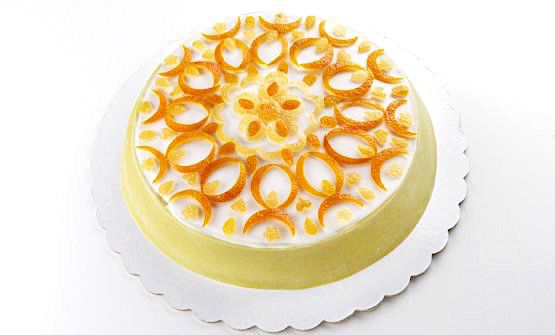
Corrado Assenza’s Cassata, the emblem dish of the 2020 Congress, in a photo from Brambilla - Serrani
There’s little over a month to go, until the 16th edition of the Congresso di Identità Golose, which will take place in Milan, at MiCo, from the 7th to the 9th March. As you have perhaps read on these pages, this year’s theme is the sense of responsibility. The emblem dish of the 16th edition, instead, will be Corrado Assenza’s Cassata.
«When we chose The Sense of Responsibility as the theme for 2020 – Paolo Marchi explains – we all realised that finding a recipe that would summarise this theme would not be easy. It wasn’t enough to find something delicious, an unquestionable excellence. The sense of responsibility led us to think both of something superlative, and of the qualities of its creator. And who better than Corrado Assenza? He’s certainly not the only one who has always shown a sense of responsibility towards every aspect of his profession, but his creed embraces everything well beyond the horizon of Noto. And his cassata is a sublimation of a millennial tradition, made contemporary through a profound knowledge of history, of raw materials, and of more contemporary diet and taste aspects».
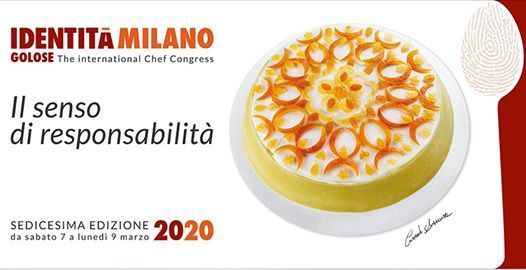
It's customary for Identità Golose to choose a dish that will illustrate and symbolise the spirit of each edition: the first time was in 2007, for the 3rd edition of the Congress. «The choice of emblem – creator and curator Paolo Marchi tells us – was based both on the capacity of the dish to represent the theme of the year, and of the evocative power and the value of the chef creating it. All these dishes have been presented on the stage of the Congress, almost always in the previous edition».
We decided to collect all the images that have characterised the past posters of Identità Milano, retracing a history made of research, creativity and culinary sensitivity. Here they are for you to see.
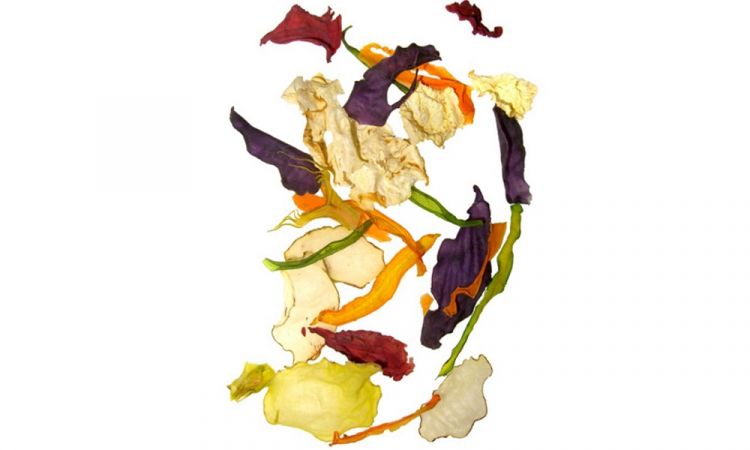
2007: Dried Vegetables from Carlo Cracco
Electing a dish as the emblem of Identità Milano was a novelty for the 3rd edition of the congress, in 2007. And of course it had to be a dish from Carlo Cracco, the chef who, together with Paolo Marchi, had initially thought of creating this festival when, in 2004 (that is to say the year before the debut at Palazzo Mezzanotte), the two of them met at Madrid Fusion. It’s made with naturally dried vegetables: at the restaurant in Via Victor Hugo they were presented in a plastic box with the “Carlo Cracco – Ristorante in Milano” logo, and it looked like it held a sort of potpourri. A pleasure for the eyes and the nose; an equally pleasant surprise for the palate, a concentrate of flavours in the shape of very thin and crispy strips of vegetables
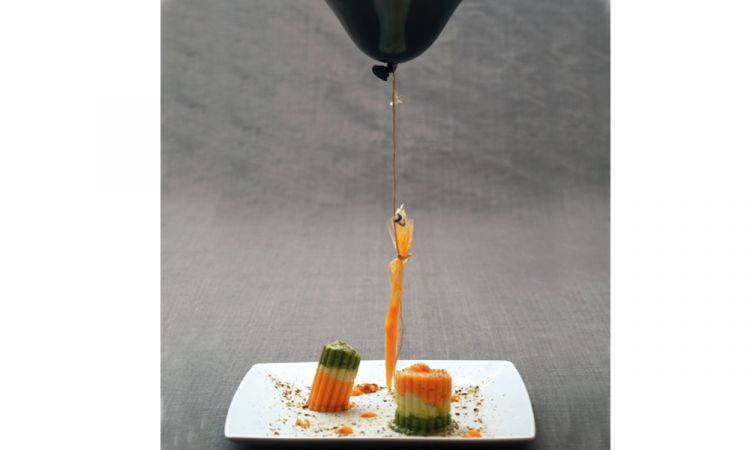
2008: Pasta and helium from Alfonso Caputo
Pasta reinvented. It came from a chef who’s always been more interested in giving value to raw materials, than in the wow factor. But in this case he surprised everyone with an acrobatics of great beauty, capable at the same time of putting the most classic Mediterranean flavours at the centre. Here is the recipe
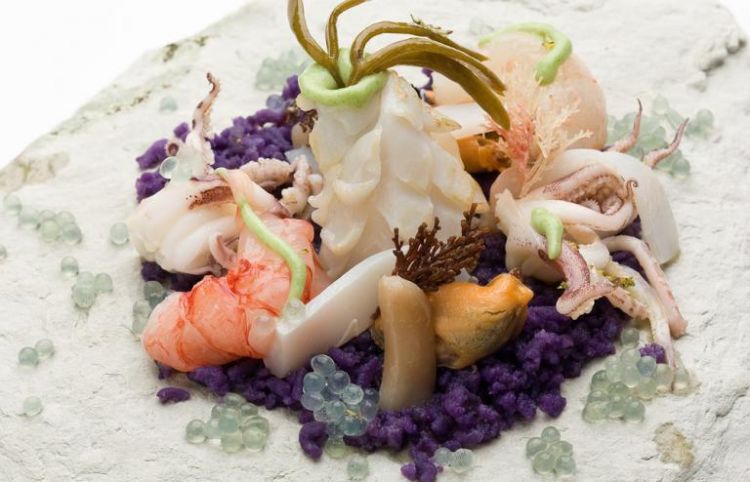
2009: Sea choreographies from traditional recipes from Moreno Cedroni
A dish which, in the words of Cedroni himself, includes «all the atmospheres of this corner of the Adriatic Sea, born while walking on the rocks in the evening, breathing in the aromas of the sea». In short, "The sea, in a clam soup". Here is the recipe
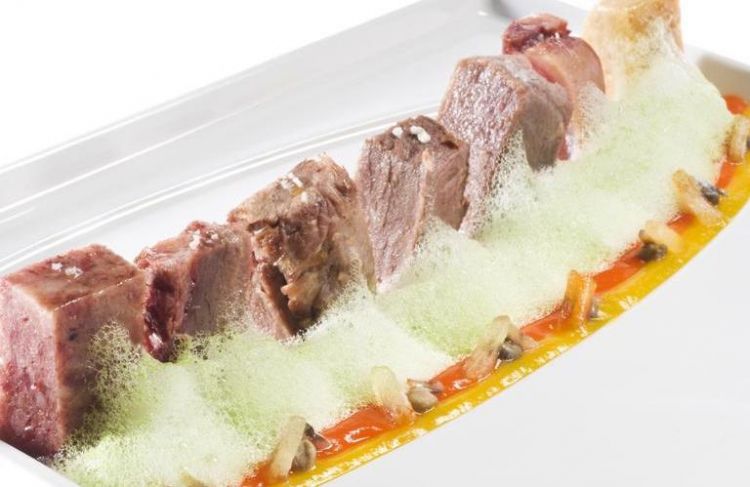
2010: Boiled non boiled from Massimo Bottura
Perhaps the most famous and iconic dish from the chef who has changed the looks, and the image, of Italian cuisine on an international scale. It is no coincidence that it was chosen as the emblem dish of an edition whose theme was "The luxury of simplicity". And in the words of Paolo Marchi back in 2010: «It’s not about walking backwards, but about walking into the future while inventing, while recuperating the best the past can offer, and interpreting it with the most current techniques». Here is the recipe
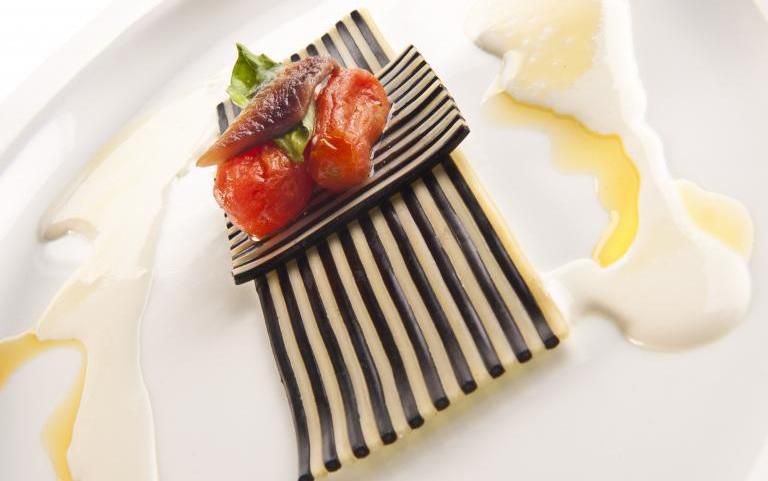
2011: Spaghetti Pizza Margherita from Davide Scabin
These days everyone knows this. Back in 2008, the great pasta producer Riccardo Felicetti dined at Davide Scabin’s Combal.Zero: «I asked him – he says – why he had no dry pasta dishes in the menu. He replied: because it’s banal. Six months later I was back with a pack of my pasta and said: "Make it non-banal, please"». Scabin took Felicetti’s invitation seriously: «It took me two months to understand what I wanted from pasta. I had long ended my research on design and packaging, but pasta brought me back to that dimension with force. Is there a more design-rich object than spaghetti or pasta shells?».Spaghetti Pizza Margherita resulted from those thoughts: spaghetti alternated with spaghetti and squid ink, rehydrated and put in a vacuum pack for 4 days in the fridge, then warmed up in the microwave oven and seasoned to taste (“Pizza Margherita” because the chef chose a sauce of tomato blend, cream of burrata and basil). The recipe
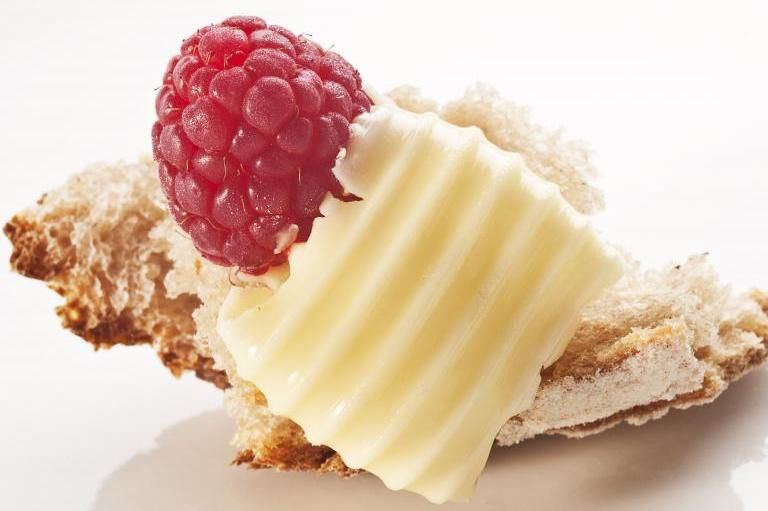
2012: Bread, salted butter & raspberry from Paolo Lopriore
A crucial "Marchesi-inspired" dish from the favourite pupil of the Master of Italian cuisine. Lopriore, the previous year, had presented this dish at Identità Golose using these words: «We must have people understand what it means “today” to eat a freshly baked bread! By marking the days at the hotel in Siena, I wanted to make the clients’ palate participate in this daily bread-making activity. Reaching guests with a slice of bread with salted butter and a very simple fresh raspberry, at any time of day, is the pure art of simplicity. We pull down rituals to give substance». Here is the recipe
![2013: Pier-Angelini from Massimiliano and Raffaele Alajmo
Fulvio Pierangelini’s Passatina di ceci con gamberi [Chickpea purée with prawns] is one of the most quoted and often wickedly copied dishes in Italian modern cuisine. This is the right tribute to this chef, given in 2012 from the stage of Identità by the Alajmo brothers, with a dish that became the emblem of the following edition](https://www.identitagolose.it/public/images/xmedium/1392020863492-2013pier-angelinidimassimilianoeraffaelealajmopresentatoaidentitmilano2012phbrambilla-serrani.jpg)
2013: Pier-Angelini from Massimiliano and Raffaele Alajmo
Fulvio Pierangelini’s Passatina di ceci con gamberi [Chickpea purée with prawns] is one of the most quoted and often wickedly copied dishes in Italian modern cuisine. This is the right tribute to this chef, given in 2012 from the stage of Identità by the Alajmo brothers, with a dish that became the emblem of the following edition
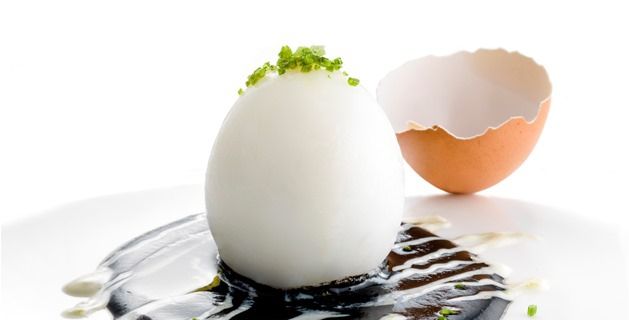
2014: Squid egg from Pino Cuttaia
In the words of Paolo Marchi when presenting the 2014 Congress, this dish is nothing but «the latest version of the Sicilian chef’s work on a popular mollusc, made noble by an extraordinary play that recalls the most classic egg of all, a hen’s egg»
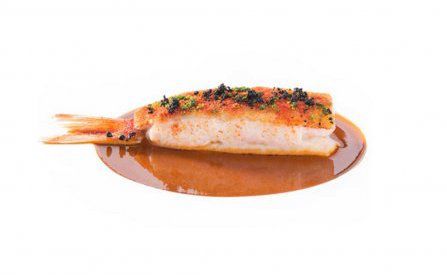
2015: Liveronese style mullet from Massimo Bottura
It’s a mullet in camouflage, the famous Livornese style, a classic Italian dish but only seemingly so. «We open it – the chef says -, remove the bones, and analyse it. It has a bitter aftertaste which we balance with a sweet lobster cream. Then comes the "crunch" given by a piece of bread placed on the skin, to be dipped in the sauce». The sauce (made with bones, parsley, white wine, tomato, extra virgin olive oil…) completes the picture
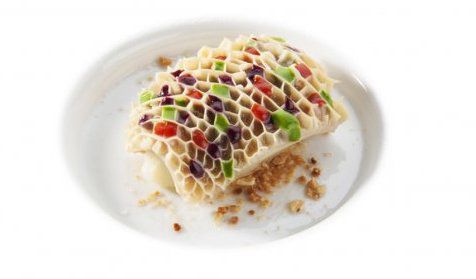
2016: Il Nido dell'Ape from Cristina Bowerman
Also known as To bee ot not to bee, this dish from the chef at Glass Hostaria in Rome plays on the balance between different inspirations and a poor ingredient, like tripe. The recipe

2017: Prawn cocktail and late radicchio from Enrico Crippa
A beautiful dish. Aesthetics are certainly crucial in signature cuisine, but this doesn’t mean they should be more important than flavours. With the chef from Piazza Duomo in Alba there’s no such risk and this mix of colours and flavours became the emblem of an edition dedicated to the travels of men, products and ideas
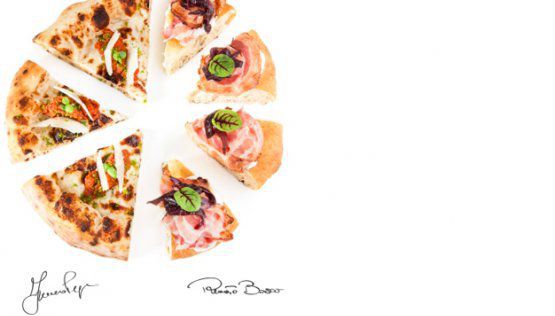
2018: La Pizza from Franco Pepe and Renato Bosco
In 2018 the emblem dish was pizza. Not just one pizza, but two, to unite Italy under the same image. In the photo, seven slices stand out. The three on the left are from Franco Pepe, the four on the right are from Renato Bosco. Campania, where pizza was born, and Veneto, the region where pizza was reborn thanks to Simone Padoan and Bosco himself. Pure conviviality, the innovation of an ancient product, of men and their knowledge, before any possible dough or baking technique
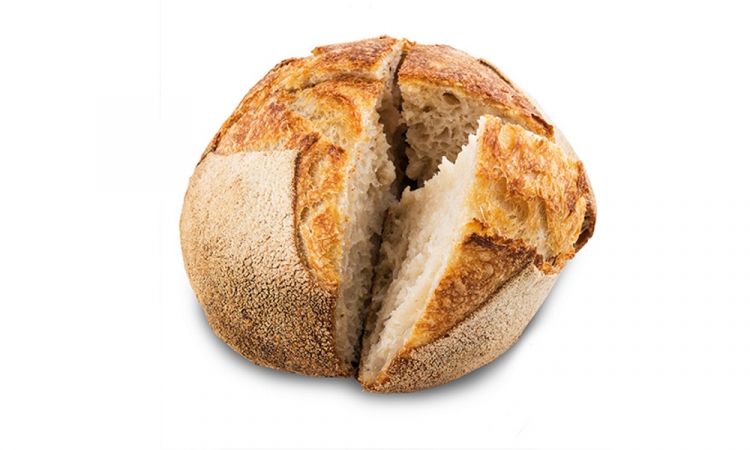
2019: Il Pane from Niko Romito
«Every year, we chose a dish to represent the congress with a twofold goal – Paolo Marchi said last year – The first, is to use an image to highlight the theme of the congress. In this case,The Human Factor: Building New Memories. And it’s obvious this food has an evocative function that takes part in our history and yet – and this is the second goal – it has been presented for some time with a new approach and dignity by a chef like Niko Romito», recuperating its central role in the Mediterranean culture: “companatico” is everything that comes with bread, and not vice versa. That is to say that Bread is the pillar, the rest comes next (cumpanatĭcum from Medieval Latin, i.e. cum pane, with bread).
Translated into English by Slawka G. Scarso
Journalist, based in Milan. At 8 years old, he received a Springsteen record as a gift, and nothing was the same since. Music and food are his passions. Author and broadcaster at Radio Popolare since 1997, since 2014 he became part of the staff of Identità Golose
Instagram: @NiccoloVecchia
Author's articles list